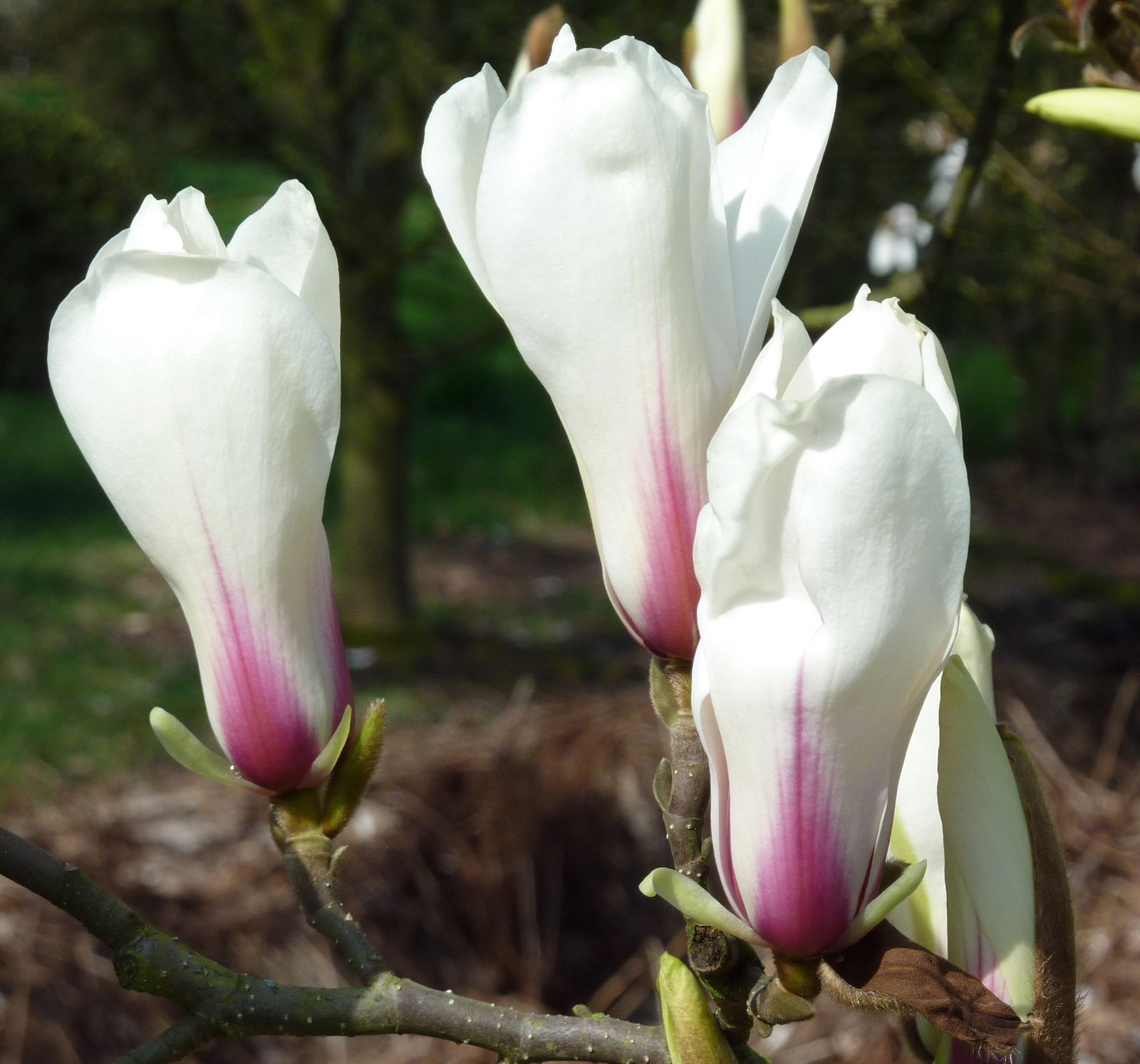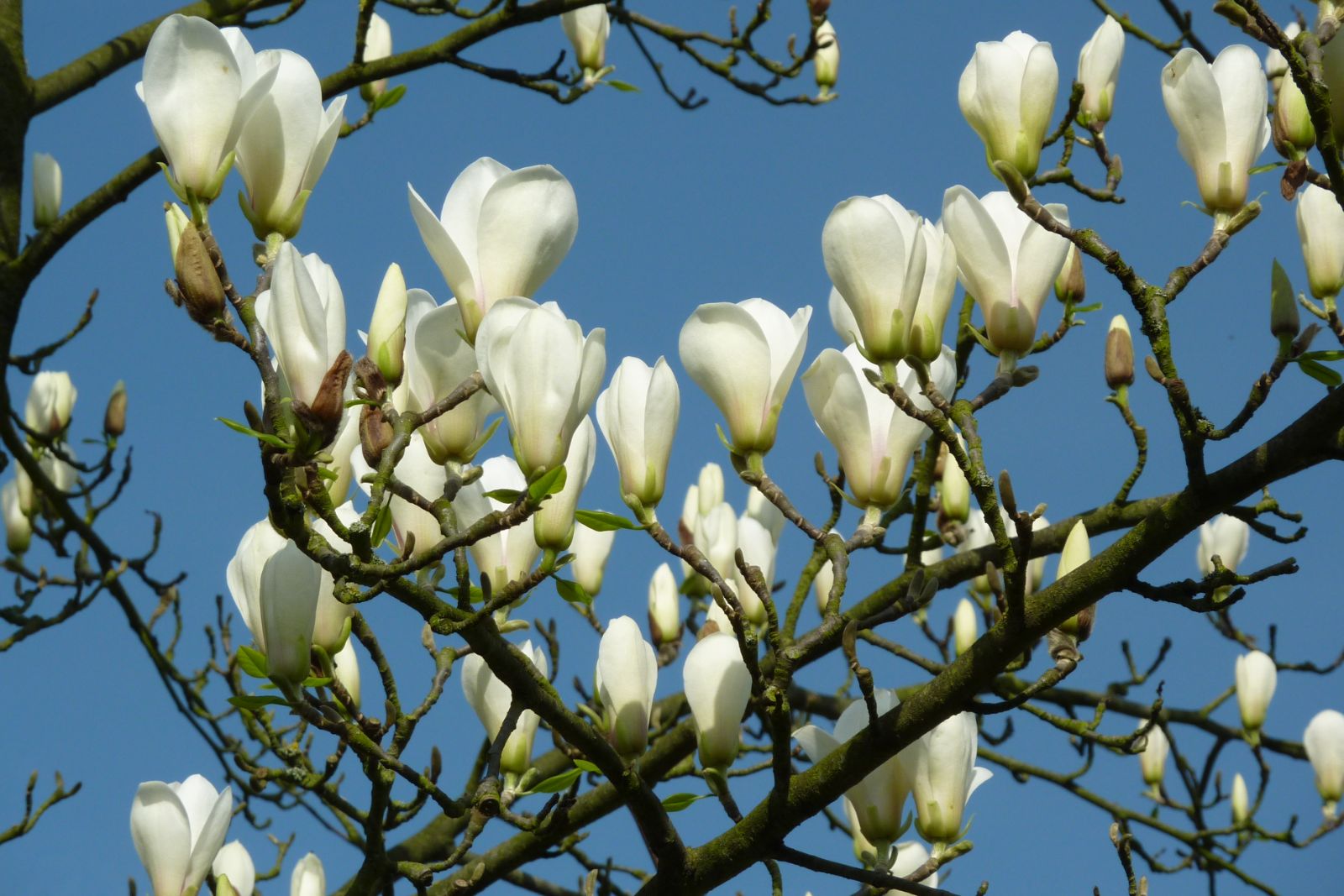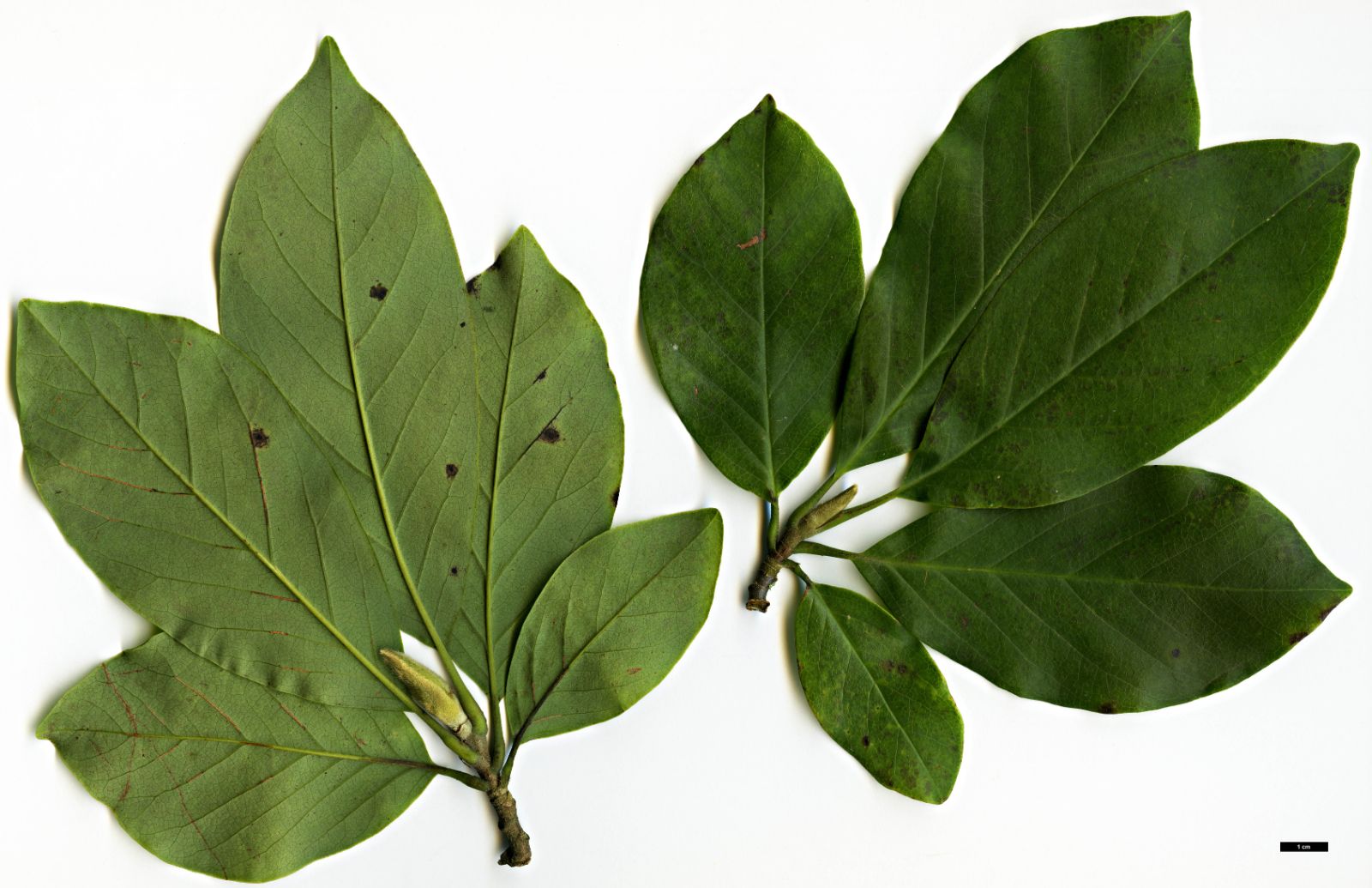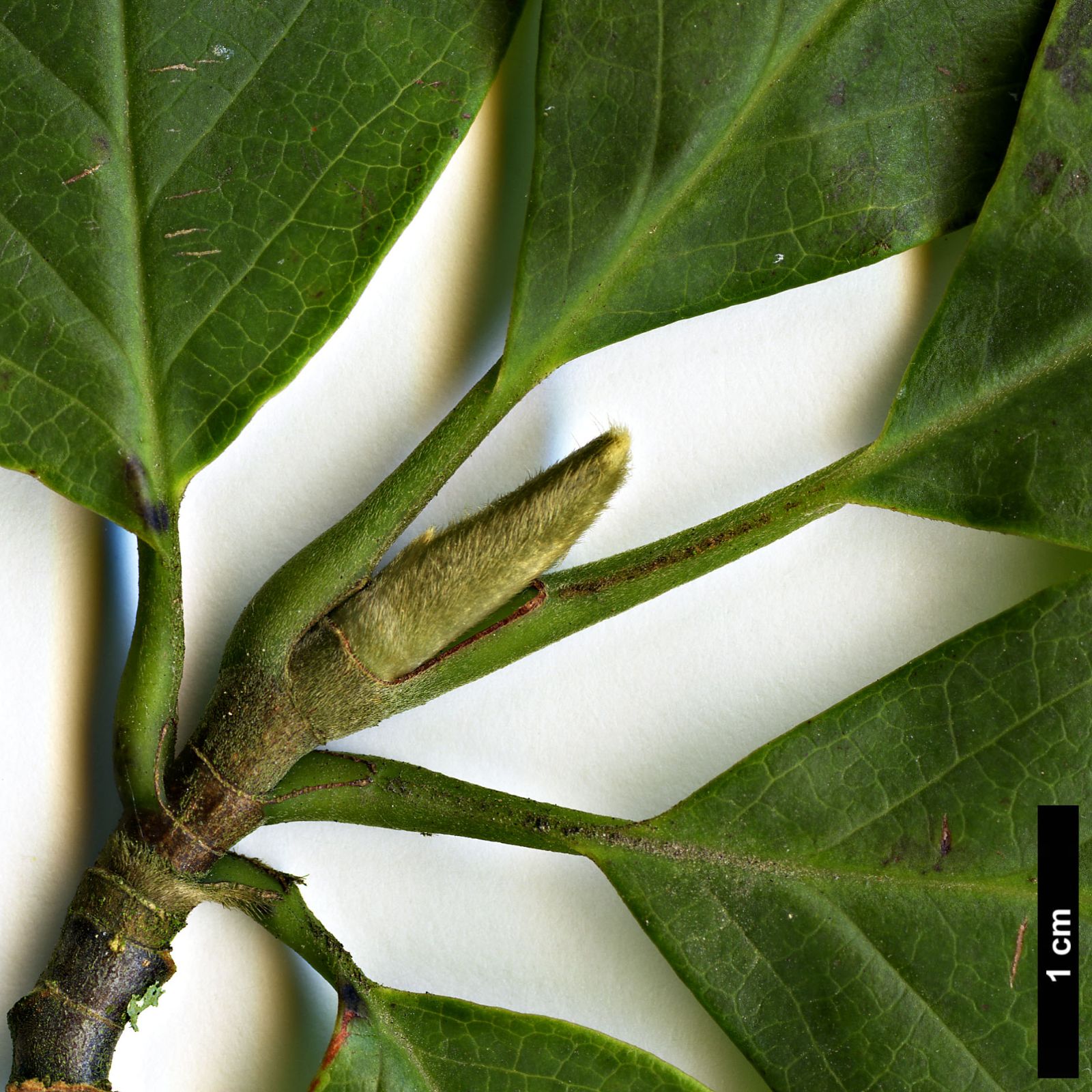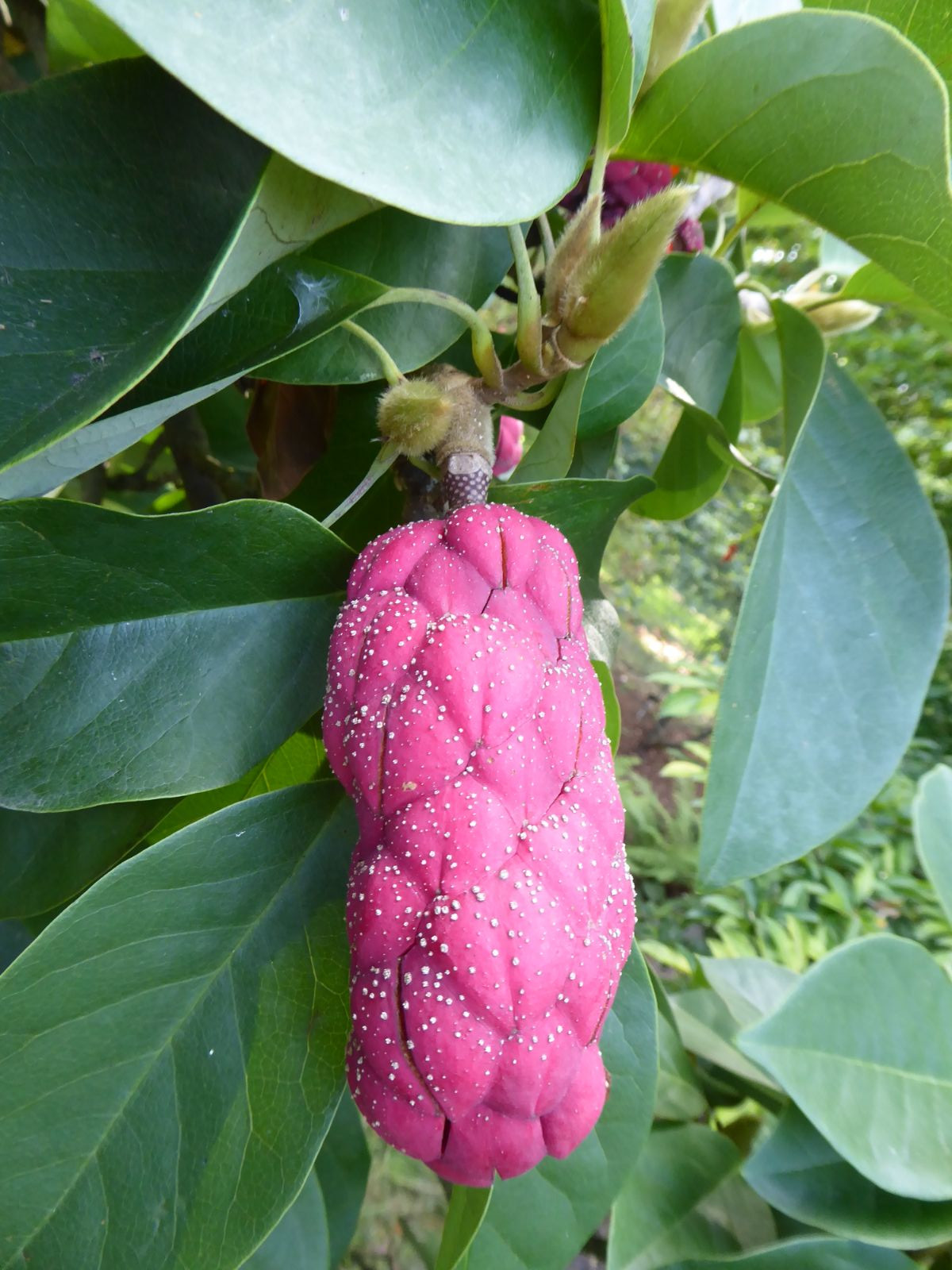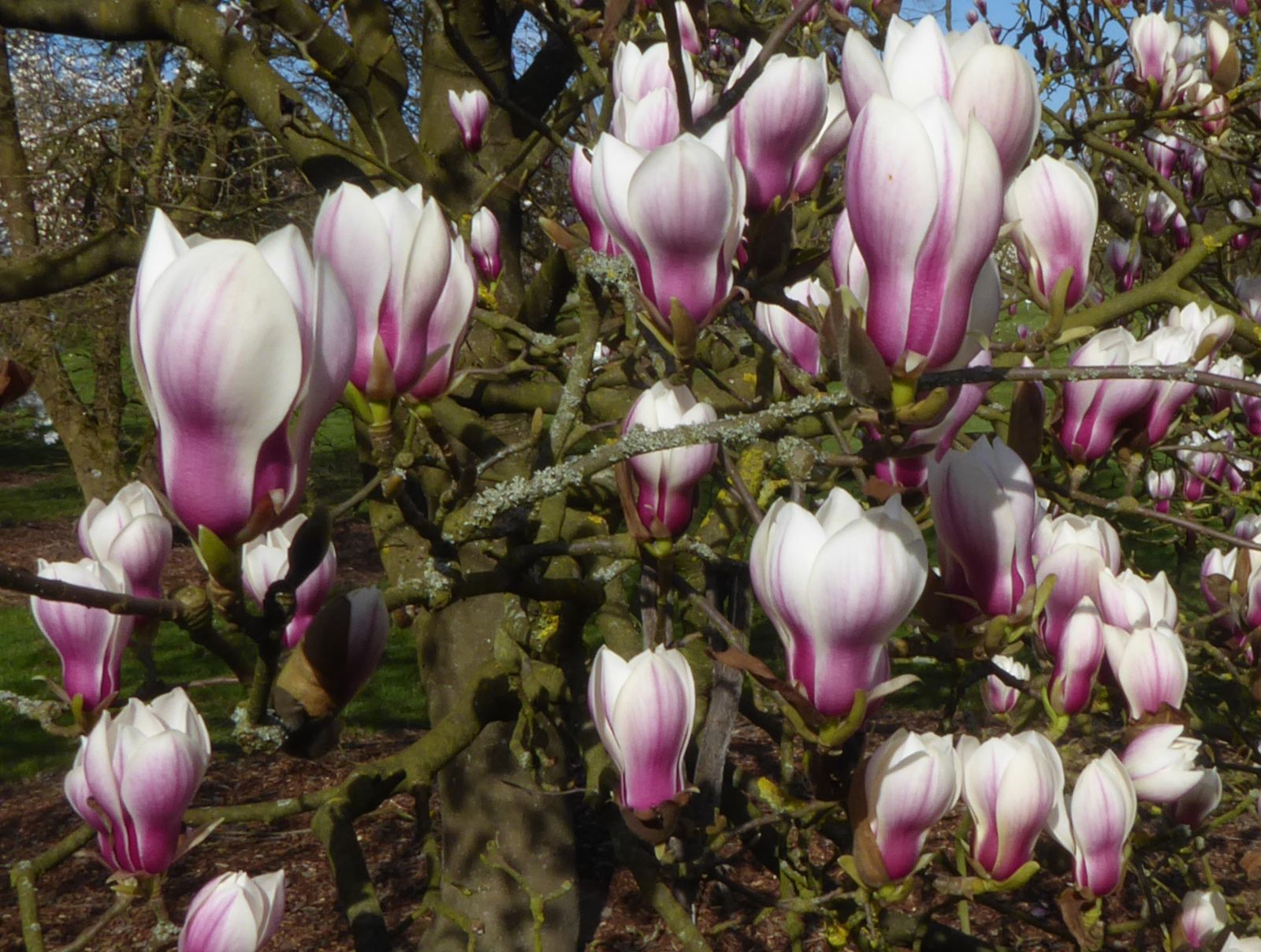Magnolia cylindrica
Sponsor
Kindly sponsored by
The Roy Overland Charitable Trust

Credits
Julian Sutton (2022)
Recommended citation
Sutton, J. (2022), 'Magnolia cylindrica' from the website Trees and Shrubs Online (treesandshrubsonline.
Genus
- Magnolia
- Section Yulania
Common Names
- Cylindrical Magnolia
- Huangshan Magnolia
- huang shan yu lan
Synonyms
- Yulania cylindrica (E.H. Wilson) D.L. Fu
Infraspecifics
Other taxa in genus
- Magnolia acuminata
- Magnolia × alba
- Magnolia amabilis
- Magnolia amoena
- Magnolia aromatica
- Magnolia biondii
- Magnolia × brooklynensis
- Magnolia campbellii
- Magnolia cathcartii
- Magnolia cavaleriei
- Magnolia caveana
- Magnolia champaca
- Magnolia changhungtana
- Magnolia chapensis
- Magnolia compressa
- Magnolia conifera
- Magnolia Cultivars A
- Magnolia Cultivars B
- Magnolia Cultivars C
- Magnolia Cultivars D
- Magnolia Cultivars E
- Magnolia Cultivars F
- Magnolia Cultivars G
- Magnolia Cultivars H–I
- Magnolia Cultivars J
- Magnolia Cultivars K
- Magnolia Cultivars L
- Magnolia Cultivars M
- Magnolia Cultivars N–O
- Magnolia Cultivars P
- Magnolia Cultivars Q–R
- Magnolia Cultivars S
- Magnolia Cultivars T
- Magnolia Cultivars U–V
- Magnolia Cultivars W–Z
- Magnolia dandyi
- Magnolia dawsoniana
- Magnolia de Vos and Kosar hybrids
- Magnolia decidua
- Magnolia delavayi
- Magnolia denudata
- Magnolia doltsopa
- Magnolia duclouxii
- Magnolia ernestii
- Magnolia figo
- Magnolia floribunda
- Magnolia × foggii
- Magnolia fordiana
- Magnolia foveolata
- Magnolia fraseri
- Magnolia fulva
- Magnolia globosa
- Magnolia × gotoburgensis
- Magnolia grandiflora
- Magnolia grandis
- Magnolia Gresham hybrids
- Magnolia guangdongensis
- Magnolia hookeri
- Magnolia insignis
- Magnolia Jury hybrids
- Magnolia × kewensis
- Magnolia kobus
- Magnolia kwangtungensis
- Magnolia laevifolia
- Magnolia lanuginosa
- Magnolia leveilleana
- Magnolia liliiflora
- Magnolia × loebneri
- Magnolia lotungensis
- Magnolia macclurei
- Magnolia macrophylla
- Magnolia martini
- Magnolia maudiae
- Magnolia nitida
- Magnolia obovata
- Magnolia officinalis
- Magnolia opipara
- Magnolia × proctoriana
- Magnolia × pruhoniciana
- Magnolia rostrata
- Magnolia salicifolia
- Magnolia sapaensis
- Magnolia sargentiana
- Magnolia sieboldii
- Magnolia sinensis
- Magnolia sinica
- Magnolia sinostellata
- Magnolia × soulangeana
- Magnolia sprengeri
- Magnolia stellata
- Magnolia tamaulipana
- Magnolia × thomsoniana
- Magnolia tripetala
- Magnolia × veitchii
- Magnolia virginiana
- Magnolia × wieseneri
- Magnolia wilsonii
- Magnolia xinganensis
- Magnolia yunnanensis
- Magnolia yuyuanensis
- Magnolia zenii
Small deciduous tree to 10 m. Bark greyish white, smooth. Branchlets with pale yellow appressed hairs when young; their bark purplish brown when older, pungent when crushed. Leaf blade obovate to oblong, 6–14 × 2–5(–6.5) cm, membranous; lower surface grey-green, with fine, pale yellow appressed hairs at first; upper surface green, glabrous; base nearly rounded to broadly cuneate; apex obtuse, acute, or caudate. Petiole 0.5–2 cm, narrowly furrowed; stipular scar ⅙–⅓ as long as petiole. Peduncle 1–1.5 cm, thick and strong, with long, dense, pale yellow silky hairs. Flowers appearing before leaves, erect. Flower buds ovoid, with long, pale yellowish to silvery-grey hairs. Tepals 9; outer 3 tepals sepal-like, 1.2–2 × ~0.4 cm, membranous; tepals of middle and inner whorls white, usually red at the base, petal-like, obovate, 6.5–10 × 2.5–4.5 cm, base clawed; inner 3 tepals erect. Stamens ~1 cm; filaments pale red; connective exserted and forming a tip or mucro. Gynoecium green, cylindric-ovoid, ~1.2 cm. Fruits cylindrical,pendulous, 5–9 cm long, green becoming various shades of red when ripe. Some carpels dehisce via dorsal suture while others show circumscissile dehiscence, with the apical parts of the carpel falling away individually or in irregular masses. Seeds (without sarcotesta) brown, cordate, 7–10 × 9–11 mm, laterally compressed, broadly furrowed above, base cuneate, apex V-shaped. Flowering April–June (China), March to April (UK); fruiting August–September (China). Tetraploid 2n=76. (Xia, Liu & Nooteboom 2008; Spongberg 1998).
Distribution China Anhui, Fujian, S Henan, Hubei, Jiangxi, Zhejiang
Habitat Forests; 700–1600 m.
USDA Hardiness Zone 5-9
RHS Hardiness Rating H5
Conservation status Vulnerable (VU)
Taxonomic note The recently described var. purpurascens Y.L. Wang & S.Z. Zhang, from S Zhejiang in semi-evergreen broad-leaved forest at 1100–1220 m, differs in the purplish-red middle and inner tepals (vs. white with a red basal stain in var. cylindrica), and in the way the tepals remain erect as the flower ages (vs. becoming increasingly reflexed) (Wang et al. 2013).
This relatively small, deciduous, rather hardy magnolia is still rare in cultivation, although in the past its name has often been applied to what have proved to be hybrid seedlings. It resembles M. denudata in the poise, size and shape of its flowers, but in that species the flowers have nine petal-like tepals and no sepaloid outer whorl. M. cylindrica, like M. salicifolia and M. kobus, has only six petaloid segments, with an outer whorl of sepaloid tepals. The connate mature carpels, which are straight rather than curved, are distinctive.
Native to eastern China, it was named by Ernest Wilson (in Rehder & Wilson 1927) from a fruiting specimen collected two years earlier on the Huangshan, Anhui, by fern specialist Ching Ren-Chang. The specific epithet refers to the brightly coloured (pink to red) fruit, larger and more cylindrical than that of M. salicifolia. Introductions of the true plant have principally been through the seed lists of Chinese botanical gardens, but collections have also been made by expeditions, including vegetative propagations from trees in the Huangshan made in 1988 by Peter Bristol, Lawrence Lee and Peter Wharton. The oldest trees in cultivation seem to be two growing in the David C. Lam Asian Garden in Vancouver, from seed collected in Zhejiang and distributed by the Shanghai Botanic Garden in 1980, standing 8–10 m tall by 2007. The finest tree known in Europe is in Roy Lancaster’s Hampshire garden and is of the same provenance, although sown in 1984; first flowering in 1990 (Lancaster 1998) it has grown well ever since, reaching 12.5 m × 116 cm by 2021 (The Tree Register 2021). It flowers and fruits prolifically each year. This tree and one of similar height grown by John Gallagher have a single straight stem with ascending branches.
Earlier introductions proved to be of hybridized seed (perhaps with M. denudata) although identification was for many years confused and controversial: great caution should still be taken with mentions in the literature, and with the name on nursery stock. Most importantly, seed distributed in 1936 from Lushan Botanical Garden, Jiangxi, eventually resulted in a 15 m tree raised by Mary Henry, Pennsylvania, whose garden is now the Henry Botanic Garden; scions were distributed on both sides of the Atlantic, notably to Hillier Nurseries in England. Other hybrid seedlings may also have been raised in the United States (Gardiner 2000). Many of these hybrids have only petaloid tepals, and do not fruit (Hunt 1998; Spongberg 1998). Comparative illustrations are given in Magnolias and their Allies (Hunt 1998). Henry’s seedling, now named ‘Pegasus’, has a more spreading crown and arguably more attractive flowers than true M. cylindrica.
‘Good magnolia conditions’ will suit all forms of M. cylindrica; it is interesting, however, that the Anhui grafts mentioned above grow in ‘deep forest conditions’ in Vancouver, but flower well every year (P. Wharton, pers. comm. 2007). Material from these has been distributed commercially by Otto Eisenhut’s nursery in Ticino, Switzerland (Eisenhut 2008).
Other hybrids are rather few, but include crosses between the Lushan hybrids and M. × veitchii (e.g. ‘Albatross’), and M. campbellii (e.g. ‘Peter Dummer’ and probably ‘Leda’).
'Bjuv'
This has 6 sepals distinctly stained along the outside with red purple, dense at the base but extending to the tip. It flowered for the first time in the garden of Karl Flinck in Bjuv, Sweden. Flinck obtained it as seed of M. cylindrica collected by Arnold Arboretum staff in China. It was registered by Philippe de Spoelberch in 1995, and is still highly rated by him as a ‘neat, dark’ form (pers. comm. 2021).

